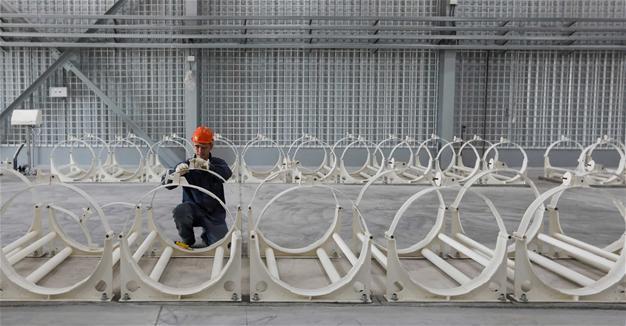UN nuclear watchdog to open uranium bank that may have no clients
OSKEMEN – Reuters
 The U.N. global nuclear watchdog is about to open a uranium bank in the Central Asian state of Kazakhstan, but it may never have any customers.
The U.N. global nuclear watchdog is about to open a uranium bank in the Central Asian state of Kazakhstan, but it may never have any customers. The raw material used to make nuclear fuel and atomic bombs will be stored in a Soviet-era industrial plant where security was once considered so lax that all the highly enriched uranium kept there was removed in a covert U.S. operation in 1994.
The International Atomic Energy Agency’s goal now is the same as Washington’s 23 years ago as it prepares for next month’s launch of its Low Enriched Uranium Bank in the city of Oskemen -- to prevent nuclear proliferation.
But this time there will be no weapons-grade uranium involved and in the best-case scenario the $150-million bank will never need to be used.
IAEA member states will be able to “draw” low-enriched uranium at market prices if supplies of fuel to a nuclear power plant are disrupted “due to exceptional circumstances”, but the bank will be a lender of last resort.
The aim is to discourage nations from spending time and money on developing nuclear-enrichment technologies that might be used to purify uranium to weapons-grade levels, and to deter countries from trying to obtain uranium illegally.
The IAEA wants to have a means to avert any new dispute similar to the standoff over Iran’s atomic program before world powers reached a deal with Tehran to limit its nuclear activities.
“Does it guarantee that new countries will not create enrichment facilities? Of course not,” Anton Khlopkov, founding director of the Moscow-based Center for Energy and Security Studies, said of the new bank.
“But it creates additional incentives for new nations not to set up enrichment facilities.”
Funding to build the low-enriched uranium bank in eastern Kazakhstan, about 1,000 kilometers from the capital Astana, came from several countries including the United States, and U.S. billionaire Warren Buffett contributed $50 million.
Based in a small industrial building on the territory of the Ulba Metallurgical Plant (UMP), set up in the 1940s to produce components for the Soviet arms nuclear arms programme, the bank will store up to 90 tonnes of low-enriched uranium -- enough for a light-water reactor to power a large city for three years.
Security will be tight. The bank, which has its own railway terminal, is surrounded by a metal netting fence that is about 3.5 meters high and packed with security cameras.
















